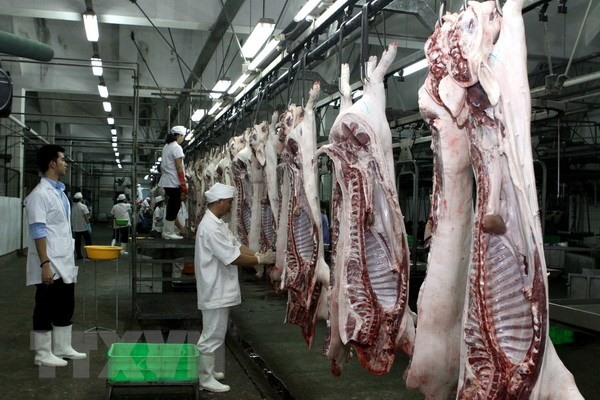 Society
Society

The HCM City’s People Committee will open six modern industrial scale cattle slaughterhouse plants this year
 |
| This year HCM City plans to open six slaughterhouses in Củ Chi and Hóc Môn districts, and shut down all the traditional slaughterhouses to ensure food safety.— VNA/VNS Photo Thanh Vũ |
HCM CITY— The HCM City’s People Committee will open six modern industrial-scale cattle slaughterhouse plants this year.
From now to September 30, the city will open at varying times the six facilities, which will have a total capacity of 13,000 animals per day.
Hóc Môn District will have two slaughterhouses, including the Xuân Thới Thượng and Tân Hiệp Food Processing plants, with the capacity of 2,000 and 3,000 animals per day, respectively.
Củ Chi District will have four facilities in Tân Thạnh Commune with the capacity of 2,000 animals per day, Tân Phú Trung Commune with the capacity of 3,000 animals per day; one on Võ Văn Bích Street with the capacity of 2,000 animals per day and another in Phước Thạnh Commune with the capacity of 1,000 animals per day.
In addition, the Vissan Joint Stock Company will open one slaughterhouse in their food processing industrial complex located in Bến Lức District in Long An Province, with the capacity of 2,500 to 4,000 animals per day.
When these slaughterhouses put into use, the city will shut down all traditional slaughterhouses where hygienic standards are often flaunted, except the Trung Tuyến slaughterhouse located in Cần Giờ District.
The city now has 11 slaughterhouses with total capacity of 6,330 pigs and 82,000 poultry per day.
Also, by the end of this year, the city expects to put into use two slaughterhouses belonging to Phạm Tôn Co. Ltd and Sài Gòn Agriculture One Member Co. Ltd in Củ Chi District.
The city expects that by 2020 the total capacity of these plants will reach 15,530 pigs, 300,000 poultry and 300 cows per day.
The city has ensured food safety and strengthened inspection and management in hygiene and animal product chains, and supported slaughterhouse businesses to build their brand and promote their products to consumers. — VNS




